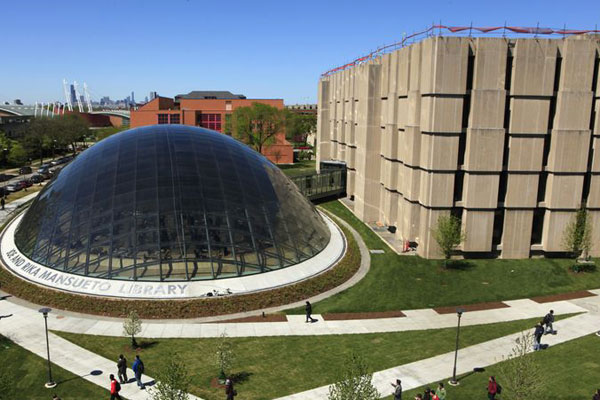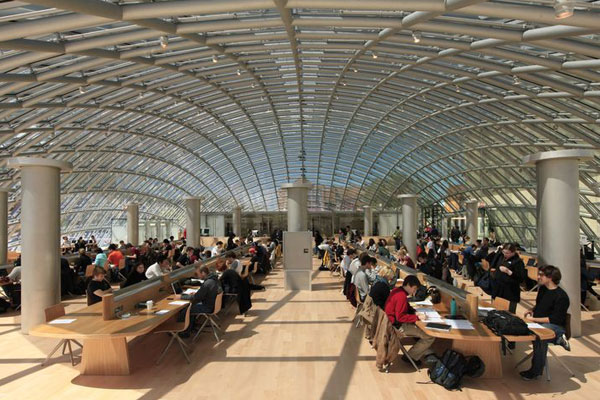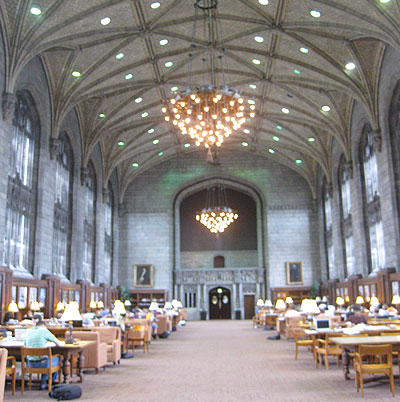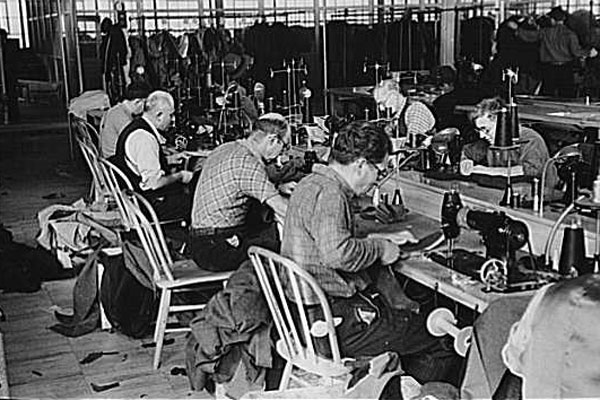The Trib‘s Blair Kamin put the new Mansueto Library (aka the Bibliodome, or at least soon to be aka the Bibliodome) on his top five architecture/urban design/preservation developments of the first half of 2011. And I bet it’ll be there at the end of 2011, too, and maybe the end of the 2010s. Save for some sticklers in the comments of the original review, who are still sore about the Thompson Center, it seems to be universally acclaimed.
Since I’ll be paying the university until the way of all flesh resolves me of my debts, I decided to check it out. All of Kamin’s praise rings true, though I do take issue with one thing Helmut Jahn said:
Making the box even less appealing, a reading room likely would have been squeezed beneath it, suggesting that students would be crushed by the weight of the volumes above.
“How would [you] like to study below 3.5 million books?” Jahn asked university officials.
I would! But I’m a fan of the grim gravitas of the brutalist Regenstein Library next door, and mostly alone in that. I think studying under 3.5 million books would be gravatastic.

Nonetheless, I’ve liked the design since it was conceived. But I wanted to see how it played out as a reading room. University of Chicago students have different relationships to different libraries, and it’s as much a function of custom as architecture. There are deathly quiet parts of the bunker-like Regenstein, but certain floors are social hot spots to be avoided if you want to actually work.
On the other hand, there’s the McCormick Lounge, located dead set in the middle of the student union, where conversation is essentially verboten despite the constant activity outside the door, and the dim lighting and plush chairs facilitate hardcore napping.
Mansueto, which was packed on the day I visited, is just as quiet. Which surprised me a bit—being composed of steel, glass, and wood, I figured it would be at least a bit noisy. But it wasn’t, at all. The lack of sound buffering actually seemed to discourage social interaction. Mansueto, at least in the time I spent there, was a workspace. Kamin writes:
The furniture — designed by London-based architect Yorgo Lykouria, who once worked for Jahn — offers Scandinavian warmth while evoking the linear tables in the U. of C.’s great reading rooms.
Here’s what it looks like:

Here’s the U of C’s greatest reading room, Harper Library:

But Mansueto puts me just as much in mind of Edward Burtynsky’s photographs of Chinese factories, the workroom in Frank Lloyd Wright’s Johnson Wax Building, and the long, shallow tables of workers facing one another at garment factories. Just replace the sewing machines with laptops:

It’s less a reading room than a workplace—dense, efficient, and quiet, the tables having narrowed down to a minimum footprint for an age in which information takes up less room. It’s serious, if less contemplative, a reading room for the digital age.
Photographs: Chicago Tribune; jen robinson (CC by 2.0); Library of Congress (FSA/OWI collection)




Comments are closed.